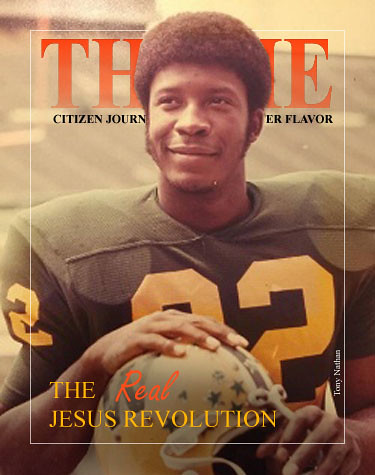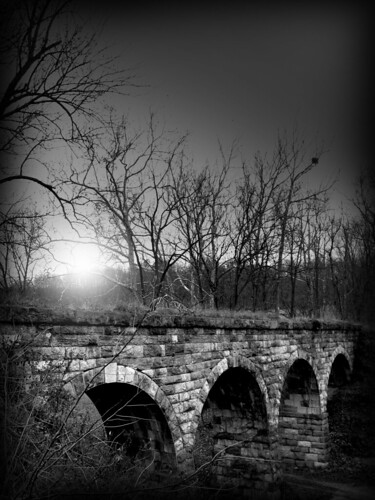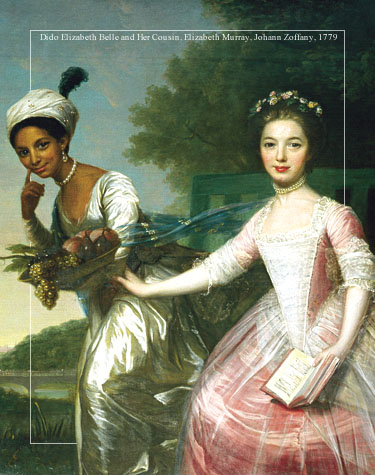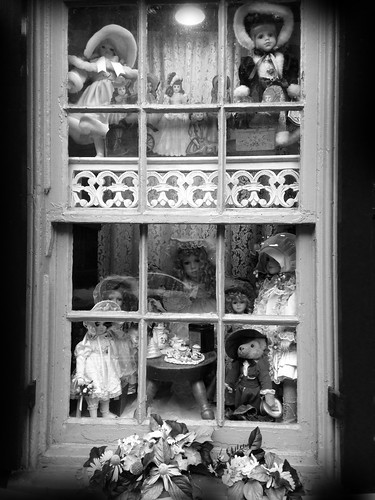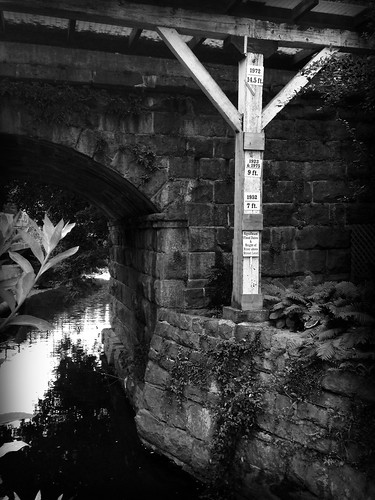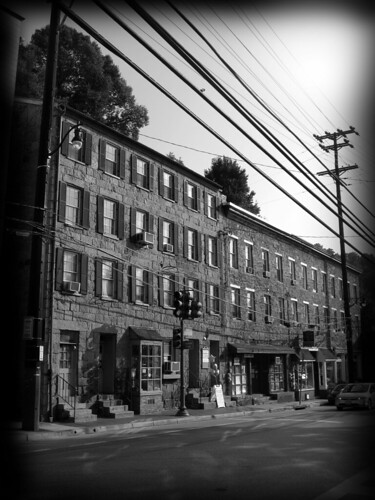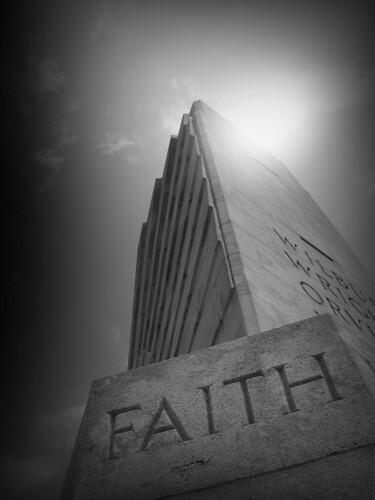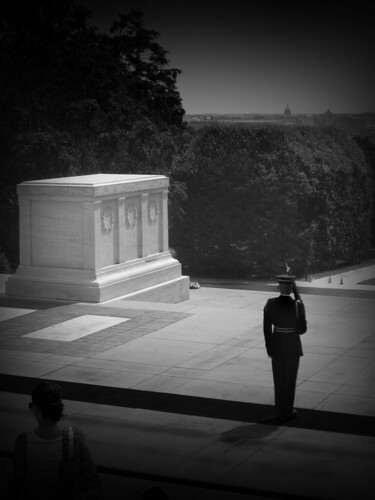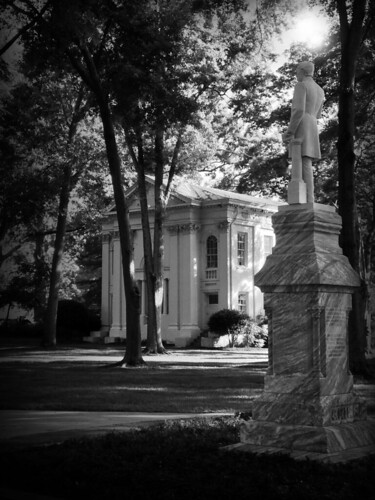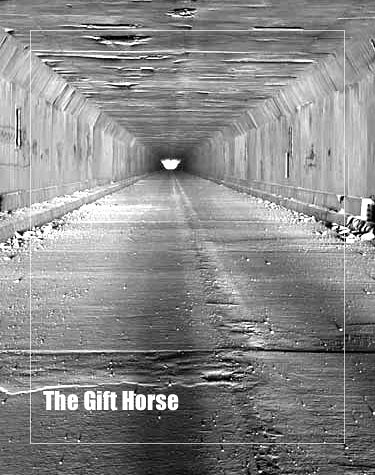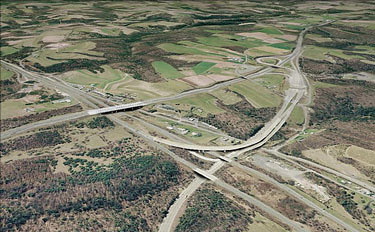Citizen Journalism with a Better Flavor
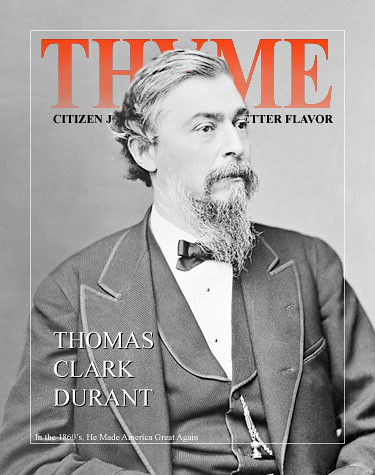 Volume XI, Issue XXVII
I
Volume XI, Issue XXVII
In the early 1860’s there were two Americas. There were the Eastern states who would all too soon divide into Union and Confederacy, but then there was California. Although America stretched from “sea to shining sea,” California was isolated from the East by what many considered miles of uninhabitable desert. To get to California, one often took passage on a ship to Panama, made a short trip overland and then boarded another ship for San Francisco. California, in time, could have easily become another country.
Then there was the great settlement of the Latter Day Saints at Salt Lake. There could have been another nation created by their isolation on both sides. Railroads were already well established in the East, but there was none crossing the great desert. Hearty pioneers walked beside their ox-drawn wagons on trails to California and Oregon, but they likely saw this as a one-time migration, never looking back. Commerce was not possible on any scale without improved transportation.
As the Nation advanced toward her terrible Civil War, President
Abraham Lincoln signed The Pacific Railroad Act of 1862 that made construction of the transcontinental railroad possible. It assigned the job to two companies: the Central Pacific Railroad of California was to build eastward from Sacramento, and a new company called the Union Pacific was to build westward up the Platte River Valley from Omaha, Nebraska. It was called a
“work of giants” by some, but if they were giants, there were some of them who were not unlike the ruthless Philistine:
Goliath.
The greatest
‘Goliath’ of all, in the building of the Union Pacific road would have to be Dr.
Thomas Clark Durant. Trained in medicine, he kept the title as he pursued schemes for making money. He founded a railroad company, the Missouri and Mississippi Railroad, in 1854. Though he built very little of it, he poised himself to take advantage of a future Pacific railroad project, should it come to be. During the Civil War, he and his associate
Grenville Dodge smuggled contraband cotton out of the South. With the money he made from smuggling, he invested in a fairly devious subscription scheme that left him in control of the Union Pacific Railroad Company.
Now the good doctor made himself Vice President and named a figurehead President for the company. Dodge would become his chief engineer. As the road was built, the scheming Durant would come into conflict with Dodge, as the engineer fought to direct resources to building track and Durant tried to divert them.
Prior to the Civil War the building of the road had been stalled by a dispute over whether a Northern or Southern route should be chosen. Secession allowed for the decisive selection of the Northern route from Omaha. The Pacific Railroad Act of 1862 had set aside a land grant to finance construction, but in the Civil War era it was not enough. The Pacific Railroad Act of 1864 increased the incentives.
Oakes and
Oliver Ames had made a lot of money making shovels during the gold rush. They graduated to providing cannon during the war. The brothers put up a million dollars of their own money and pledged their credit to get the road built. By the end of 1965, however, Thomas Durant had spent half a million dollars and had laid only 40 miles of track across Nebraska. Grenville Dodge had a reputation, gained during the war, for building (and rebuilding) railroads with great speed. Durant appointed him chief engineer of the project. The conflict between Dodge and Durant as the road progressed would become legend, but Dodge was the man to get the job done. In a letter to his brother, Dodge speculated that he would likely have trouble with Durant. The two had worked together before and Dodge’s fears were well founded.
By 1866 things had changed. A newspaper man wrote:
"The track laying on the Union Pacific was a science. We, pundits of the far East, stood upon that embankment, only about a thousand miles this side of sunset, and backed westward before that hurrying corps of sturdy operators with a mingled feeling of amusement, curiosity and profound respect. On they came. A light car, drawn by a single horse, gallops up to the front with its load of rails. Two men seize the end of a rail and start forward, the rest of the gang taking hold by twos, until it is clear of the car. They come forward at a run. At the word of command the rail is dropped in its place, right side up with care, while the same process goes on at the other side of the car.
Less than thirty seconds to a rail, and so four rails go down to the minute. The moment the car is empty it is tipped over on the side of the track to let the next loaded car pass it, and then it is tipped back again, and it is a sight to see it go flying back for another load, propelled by a horse at full gallop at the end of sixty or eighty feet of rope. Close behind the first gang come the gaugers, spikers and bolters, and a lively time they make of it. It is a grand 'Anvil Chorus' that those sturdy sledges are playing across the plains. It is in triple time, three strokes to the spike. . .ten spikes to a rail, four hundred rails to a mile, eighteen hundred miles to San Francisco. Twenty-one million times are those sledges to be swung ... before the great work of modern America is complete."
In Salt Lake City, which had been established two decades before the railroad came,
Brigham Young was not happy. The shortest route for the new railroad had been laid across the Northern shore of the Great Salt Lake. Salt Lake City was on the Southern end of the lake. The rails would meet on the deserted Northern side of the lake at Promontory in 1969, but a spur would need to be built to serve Salt Lake City. Though he was not pleased with this arrangement, the Mormon leader still took a grading contract for the Union Pacific and one of his bishops took one with the Central Pacific.
Then there was no harmony at Promontory as the two lines built past each other, grading out parallel roadbeds. Grading crews would set off charges without warning to harass the men working on the grade beside them. It literally took an act of Congress to settle the joining point would be at Promontory. Durant, for his part, had not been paying his men. The men revolted, kidnapping Durant and chaining his private car to the tracks. Durant wired to his board of directors for $500,000 to pay the men and arrived late for the ceremony at Promontory.
Grenville Dodge and Durant’s relationship was frayed beyond repair. After the lines joined at Promontory, Oliver and Oakes Ames made plans to oust the scheming Durant, but he resigned before they could fire him.
David McCulloch adds this, perhaps greater perspective:
"In the same year the road was completed, 1869, another monumental epic engineering feat was completed; the Suez Canal. Suddenly the world was getting smaller, an idea that inspired Jules Verne to write 'Around the World in Eighty Days.'" The great work of Nineteenth Century America had been built by men who were less than giants, men with feet of clay, but build it they did.
In the wake of America’s horrible Civil War, revival had begun.
Ferenc Morton Szasz writes:
Though such signs of spiritual life appeared all over the Western landscape, they are completely absent from most people's visions of the nineteenth-century American frontier. Names like Buffalo Bill, Sitting Bull, Annie Oakley, Calamity Jane, Billy the Kid, and Wyatt Earp are almost synonymous with the West, while names like William D. Bloys, Daniel S. Tuttle, Charles Sheldon, Sheldon Jackson, and Brother Van Orsdel
ring few bells. Yet if one looks at actual accomplishments, the situation might well be reversed. Most Western communities owe far more to these unheralded clerics than they do to the high-profile outlaws or icons.
From about 1840 to the end of the century, these largely anonymous ministers shaped the contours of Western life in three major ways. They formed the first churches and Sunday schools, which promoted social stability while reining in local violence; they developed a distinctly Western style of Christianity that emphasized a non-denominational message of salvation and personal ethics; and they helped lay the institutional foundations - orphanages, hospitals, and schools - for scores of Western communities.”
Though the railroads had been built by speculators and schemers, it was the great message of the Gospel that laid the foundations for the society of America’s vast interior.
The Gospel that Built Frontier America [click to read].

Is America a Christian nation?
Martin Mawyer Writes:
The question itself is ambiguous. Are we talking about the founding of America? The people of America? The government of America? The morality of America? We're weighing in on this important debate by reprinting
The United States: A Christian Nation, written by Supreme Court Justice
David Brewer and published in 1905. This pocket-sized, clearly written and inspiring book also includes a modern-day foreword and afterword by CAN founder
Martin Mawyer.
So are we a Christian nation?
President
Barack Obama narrowed it down to
“the people of America” when he said on June 28, 2006:
Whatever we once were, we are no longer just a Christian nation; we are also a Jewish nation, a Muslim nation, a Buddhist nation, a Hindu nation, and a nation of nonbelievers.”
Under Obama’s logic, America is no longer a Christian nation because other faiths, beliefs and non-beliefs are represented in the land.
Carrying the Obama logic further, it can then be said that we are also a Satanic nation, witchcraft nation, voodoo nation and a nation of Nuwaubians (those who believe that white people were created to serve blacks). These too live in America and practice their religions freely.
Obama is not alone in his simplistic logic. Secularists, humanists and atheists also point to the diversity of religious belief in America to support the notion that the country is no longer a Christian nation,
“whatever it once was.”
This argument is irrational and farcical. There are child molesters in America, and we have rapists, thieves and murderers among us, but does that mean we are no longer a law-abiding nation? Should we concede that we’re no longer a nation of laws?
The answer, obviously, is “No.” We were founded in law. Law shapes all of our lives. The vast majority of Americans respect and obey the law. Never could it be said that, because some choose to follow another course, we are no longer a law-abiding nation.
Did the Obama administration suddenly become “no longer a Democratic administration” simply because
Ray LaHood (a former Republican congressman from Illinois) was appointed as Secretary of Transportation in 2009? Hardly.
Is the New York Times
“no longer a liberal newspaper” just because
George Will’s column appears in it? Of course not.
The mere presence of a person, or a group of people, does not change the history and distinctive nature of an entity. FOX News certainly isn’t considered a left-wing news organization just because
Juan Williams,
Geraldo Rivera and
Alan Colmes appear on camera.
According to a 2015 Pew Research Center survey, the Muslim population in America is 1 percent. The Hindu: .07 percent. Jews were only slightly ahead of both minorities at a meager 1.8 percent. Buddhists weren’t even numerous enough for the Pew Research Center to sample.
Christians, however, represent 75 percent of Americans. And of those Americans who claim any sort of religious belief, a commanding 94 percent identify themselves as Christian.
I understand why Jesus-haters cannot stomach these numbers, but for the vast majority of Americans, the national figures answer the burning question:
Is America a Christian nation?
Of course it is.
The Pew Research Center is unabashed in saying,
“American remains a predominantly Christian nation.”
Predominant means to be
“present as the strongest element, exertion or power.” So the strongest element in America, according to the Pew Research Center, is Christians.
More Americans read the Bible than any other book ever published.
Even the liberal Huffington Post has admitted, “The Bible is the biggest bestseller in history.”
No other book resides in more American homes than the Bible, with 88 percent of households owning at least one. Most Americans own multiple copies, on average 4.4.
Bolstering the reality that the United States is a Christian nation are two U.S. Supreme Court rulings:
In 1892, Justice David Brewer wrote a majority opinion that asserted,
“This is a Christian nation.” (Holy Trinity Church v. United States)
Again in 1931, the Supreme Court said,
“We are a Christian people.” (U.S. v. Macintosh)
Neither of these rulings has been challenged or overturned.
Some will argue that referring to ourselves as a Christian nation is living in the past, and that it’s a notion too archaic and old-fashioned for modern civilization.
Tell that to the prime minister of England, who this past Christmas Eve referred to Britain as
“a Christian country.”
As a Christian country,” Prime Minister David Cameron said in his national address, “we must remember what His birth represents: peace, mercy, goodwill and, above all, hope.”
This coming July 25, Poland will hold a public celebration in the western city of Poznań marking its 1,050th anniversary of becoming a Christian nation.
These nations can look at themselves and see their true identity: Christian.
Meanwhile, in America these days, some look at a boy and call him a girl, look at a baby and call it a tissue mass, look at creation and call it random chance, look at Islam and call it a religion of peace ...
… Or look at a Christian nation and call it secular.
Not me. Americans should never forget or be ashamed of our historic relationship with Christ and what His message has done for all Americans, as expressed so wonderfully in the words of The Battle Hymn of the Republic.
In the beauty of the lilies Christ was born across the sea,
With a glory in His bosom that transfigures you and me.
As He died to make men holy, let us die to make men free
While God is marching on.
What has Christianity done for America?
It has stood for liberty and the rights of man,” Justice Brewer wrote in his 1905 book The United States: A Christian Nation.
And the more thoroughly this republic is filled with the spirit of the gospel, the more universal the rule of Christianity in the hearts of our people, the more certainly will she ever be the welcome leader in movements for peace among the nations.”
Christianity has always represented the best things in the world: Justice, truth, free will and equality, to name a few. Whenever these great social gifts were torn apart, Christianity put them back together, sometimes through great sacrifice of human lives.
If anyone is turning the clock back, it’s the secularists and humanists who would throw us into the Age of Babylonianism – in which babies can be sold as spare body parts.
 Irish Lives Matter
I
Irish Lives Matter
In the mid-Seventies, one of my friends embarked on a rather ambitious overseas study project. He set out for Northern Ireland in order to study the age-old conflict there, its roots and possible ways to overcome it. His presentation when he returned was much anticipated. He did not let us down. His photographs captured a car bomb exploding on a Belfast street. He scored an interview with
Bernadette Devlin, the controversial Irish Republic activist and the youngest woman ever elected to the British Parliament.
My friend said that essentially the situation was similar to that in America where African Americans felt disenfranchised and were feeling that they had to resort to violence. The difference is that these people in Northern Ireland were divided by denomination. The Orange (Protestant) faction held power while the Green (Catholic) faction was often oppressed. He met with people from both sides who essentially pointed to a long-standing animosity rooted in historical events.
The irony, it seemed, was that here you could see very little, if any difference in the outward appearance of the people in each group. Indeed, the identification with Orange or Green was the great divide that could not be bridged. Sadly, my friend began to document his report on a struggle that in all likelihood had no solution.
But then he met a third group of people and they identified not so much as Catholic or Protestant, but as Christian. They included in their fellowship those of the creed they were not. They saw themselves as redeemed children of the Master and as neighbors! No longer Green, no longer Orange, they saw themselves as fellow partakers in the Kingdom of Heaven. Identification with the larger community, not a retreat to tribalism resulted in true healing. In concluding his presentation, my friend pointed to this new sense of community and laid out the great hope... that reconciliation is truly possible!

Voting, a Sacred Obligation
[click to read]
Thoughts from Charles Colson (2008)
I have been surprised by the number of Christians who have given up on politics this year.
"I don't like either candidate, so I'm staying home," some say.
How do we go about choosing the best candidates? Not by pulling a partisan lever—that's knee-jerk ideology. Christians live instead by revealed truth, never captive to any party. Thus, the best place to go for wisdom is not the candidates' websites, but the Bible.
I get fed up with the vain posturing and empty promises, too. But not voting is not an option—it's both our civic and sacred duty. Voting is required of us as good citizens and as God's agents for appointing leaders.
(Read More)
So What's at Stake: Our Future
In the last election, a large number of people stayed home. The current administration gained another four years. We cannot afford to stay home again! What's at stake? First of all, with the passing of Justice
Antonin Scalia, the Supreme Court's direction will be shaped for decades to come by who is elected this Fall. Here the choice is clear. If you stay home, vote third party or even vote directly for the party that holds the Executive Branch now, we can be assured that the most radical activist justices will be appointed. At stake are cases determining the security of
Religious Liberty,
Parent's Rights, and
Sanctity of Human Life to name a few. On the other hand,
Donald Trump has surrounded himself with people who will work to secure those values in the courts as well as in the legislative process. We cannot sit this one out!
Secondly, the current administration's all-out assault on the closely held values of God-fearing America will continue from the Executive Branch as well if their chosen candidate is elected. In the selection of
Mike Pence as the Vice-Presidential candidate, we have an assurance that we indeed have a place at the table.
[Updated Information]:
The clear promise to: "work to repeal the Johnson Amendment" is reason enough for all people of Faith to vote for Donald Trump. In 1954, then Senator Lyndon Johnson was instrumental in passing legislation which restricted the free speech rights of Pastors from their pulpits. The IRS website states:
Under the Internal Revenue Code, all section 501(c)(3) organizations are absolutely prohibited from directly or indirectly participating in, or intervening in, any political campaign on behalf of (or in opposition to) any candidate for elective public office. Contributions to political campaign funds or public statements of position (verbal or written) made on behalf of the organization in favor of or in opposition to any candidate for public office clearly violate the prohibition against political campaign activity. Violating this prohibition may result in denial or revocation of tax-exempt status and the imposition of certain excise taxes.
Certain activities or expenditures may not be prohibited depending on the facts and circumstances. For example, certain voter education activities (including presenting public forums and publishing voter education guides) conducted in a non-partisan manner do not constitute prohibited political campaign activity. In addition, other activities intended to encourage people to participate in the electoral process, such as voter registration and get-out-the-vote drives, would not be prohibited political campaign activity if conducted in a non-partisan manner.
On the other hand, voter education or registration activities with evidence of bias that (a) would favor one candidate over another; (b) oppose a candidate in some manner; or (c) have the effect of favoring a candidate or group of candidates, will constitute prohibited participation or intervention.
The Internal Revenue Service provides resources to exempt organizations and the public to help them understand the prohibition. As part of its examination program, the IRS also monitors whether organizations are complying with the prohibition." Traditionally, this oversight has been heavily applied to Conservative and Pro-Life speech, while more Liberal positions being shared are largely ignored. The promise to work for the elimination of this provision is another clear statement that people of Faith indeed do have a place at the table.
Third, we have an opportunity to re-secure our borders, protect American productivity and reestablish our position as a mighty nation that creates opportunity while it protects basic freedoms and does indeed uphold the rights of those who's voice is not as loud or strong.
Newt Gingrich summed it up in his speech to the Republican Convention, outlining the challenges before us. It is time to come together and reclaim America.

